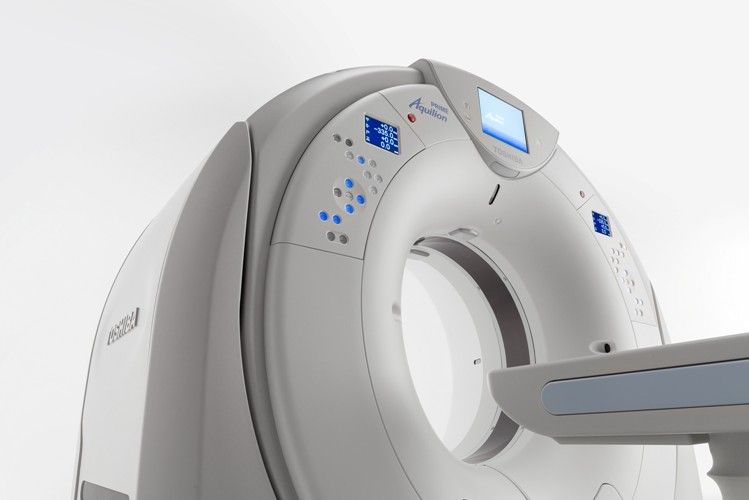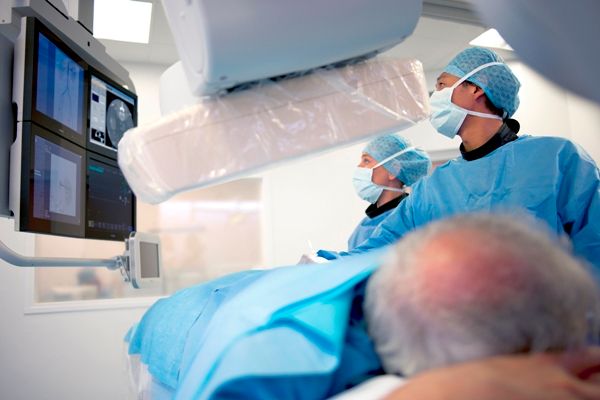2014: The Year of Patient-Friendly Technology
From lower dose to quieter, faster scans, technologies that enhance patient safety and experience will take center stage this year.
Siemens SOMATOM Force CT

Toshiba Aquilion Prime CT

Philips AlluraClarity X-ray

Philips MicroDose SI

Implementing the right tools to meet the Affordable Care Act reporting and performance requirements monopolized most of radiology’s attention in 2013. Industry experts now say 2014 is the time to focus on improving patient safety and the patient experience - and many vendors are already falling in line.
For many companies and providers, making these advancements will necessitate more control over radiation exposure, said Gail Rodriguez, PhD, executive director for the Medical Imaging and Technology Alliance (MITA).
“The most exciting thing for 2014 is the efforts companies are putting into dose reduction,” she said. “Ionizing radiation has been a concern for a few years now, and this year we’ll see greater adoption of technologies that reduce dose without sacrificing image or diagnostic quality.”
The most important impact of this technological change, she said, is the positive impact it will have on both individual patient and public health. And, as adoption of the technologies increases, the benefits will extend to the hospitals and facilities that purchase new equipment and tools.
Enhancing Patient Safety
Controlling dose exposure has been a hot topic of conversation for several years, leading to the Image Wisely and Image Gently campaigns, as well as the American College of Radiology’s (ACR) Dose Index Registry. Consequently, many vendors have released products designed to make it easier to control dose.
For example, Toshiba made changes to its Aquilion™ CT suite that are aimed reducing dose and improving imaging clarity. According to a company statement, these scanners use a helical acquisition technique to obtain a single, continuous image during cardiac scans rather than multiple images, resulting in decreased exposure. In addition, the company is also awaiting FDA clearance for the use of two energy sources during one CT scan. This feature, according to the statement, will facilitate quantifying and characterizing anatomy and lesions, reducing both exam time and radiation dose.
The Aquilion™ also offers SURESubtraction™, a feature that removes bone and calcium from images, making it easier for providers to see tumors or at-risk arteries.
Toshiba isn’t alone in its efforts to reduce dose. Philips also offers lower dose X-ray - particularly for patients with a high body mass index - through its AlluraClarity X-ray system with ClarityIQ technology. In addition, the company plans to extend its low-dose efforts to mammography in 2014 by pairing its MicroDose with Single-Shot Spectral Imaging with Spectral Breast Density Measurement, a full-field digital mammography system that offers low-dose, non-contrast spectral imaging.
Improving Patient Experience
In many cases, undergoing a diagnostic study has required patients to either remain still or hold their breath for long periods of time. For some patients, such as children or patients with movement disabilities, doing this successfully can be extremely difficult or impossible.
According to company representatives, Siemens Healthcare has taken steps to eliminate the need for a breath hold. Its new SOMATOM Force CT machine, said Jakub Mochon, CT marketing and operations director, is fast enough to capture images while the patient continues to breathe normally.
“Currently, technicians spent 15 to 20 minutes talking with patients about how to hold their breath. It frequently takes longer than the scans themselves,” he said. “But, in a healthcare system where we’re focusing on patient satisfaction and experience, it’s clear that if patients aren’t asked to hold their breath, they’ll be much happier.”
The feature will also be beneficial, he said, in performing CT scans on patients in emergency rooms who are either unconscious or otherwise unable to follow instructions.
Another common compliant from patients is the noise associated with MRI scans. To mitigate the discomfort or any potential hearing damage, both Siemens and GE Healthcare have introduced quieter technologies.
From Siemens, expect to see Quiet Suite - a tool that lowers MRI noise from 100 decibels to 75 decibels or lower. Similarly, Silent Scan from GE is designed to drop MRI noise to near-background levels.
There’s no doubt that providers and facilities will embrace tools that improve patient safety and patient experience over the next year, Rodriguez said. Some will adopt the technologies to enhance productivity; others could see it as a way to further comply with new healthcare reform regulations. Overall, however, she said, many could choose to do so for a much simpler reason.
“We’ve worked really closely with physicians and facilities in recent years,” Rodriguez said, “and they realize that making these changes is, simply, the right thing to do.”
GE HealthCare Debuts AI-Powered Cardiac CT Device at ACC Conference
April 1st 2025Featuring enhanced low-dose image quality with motion-free images, the Revolution Vibe CT system reportedly facilitates improved diagnostic clarity for patients with conditions ranging from in-stent restenosis to atrial fibrillation.
Predicting Diabetes on CT Scans: What New Research Reveals with Pancreatic Imaging Biomarkers
March 25th 2025Attenuation-based biomarkers on computed tomography (CT) scans demonstrated a 93 percent interclass correlation coefficient (ICC) agreement across three pancreatic segmentation algorithms for predicting diabetes, according to a study involving over 9,700 patients.